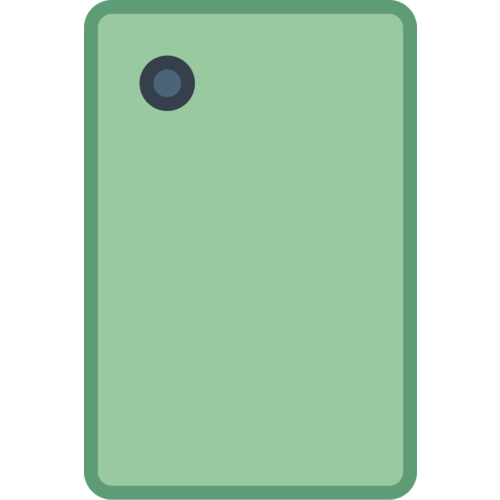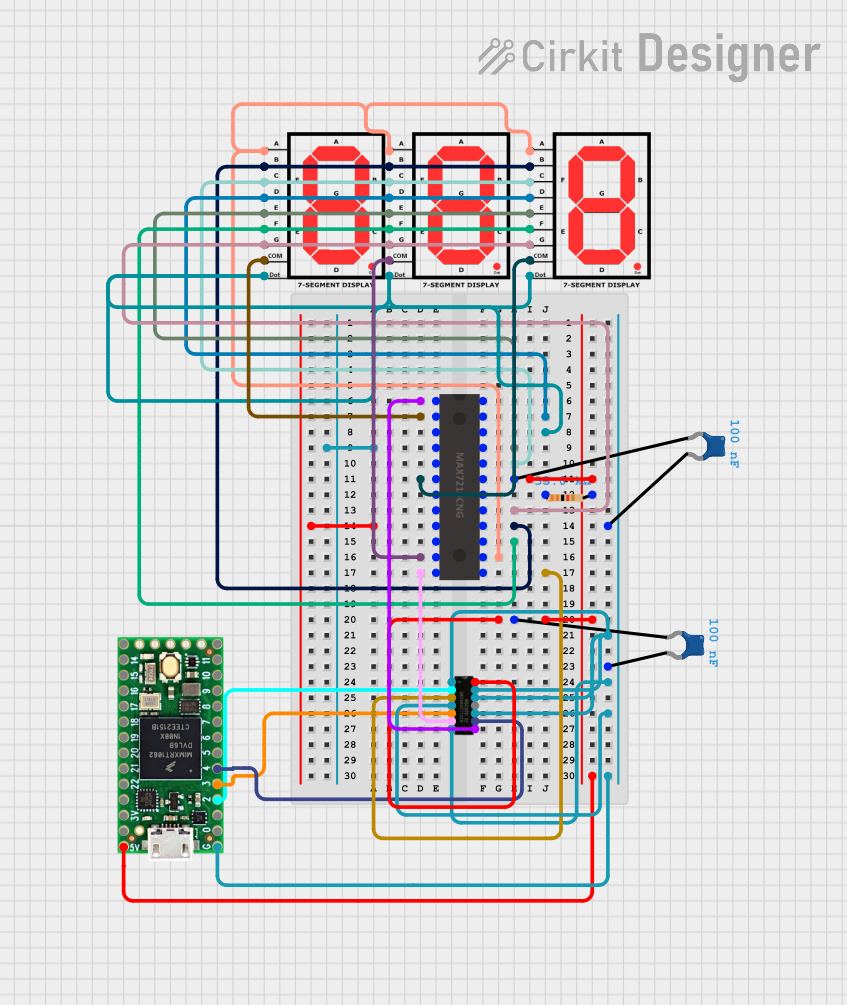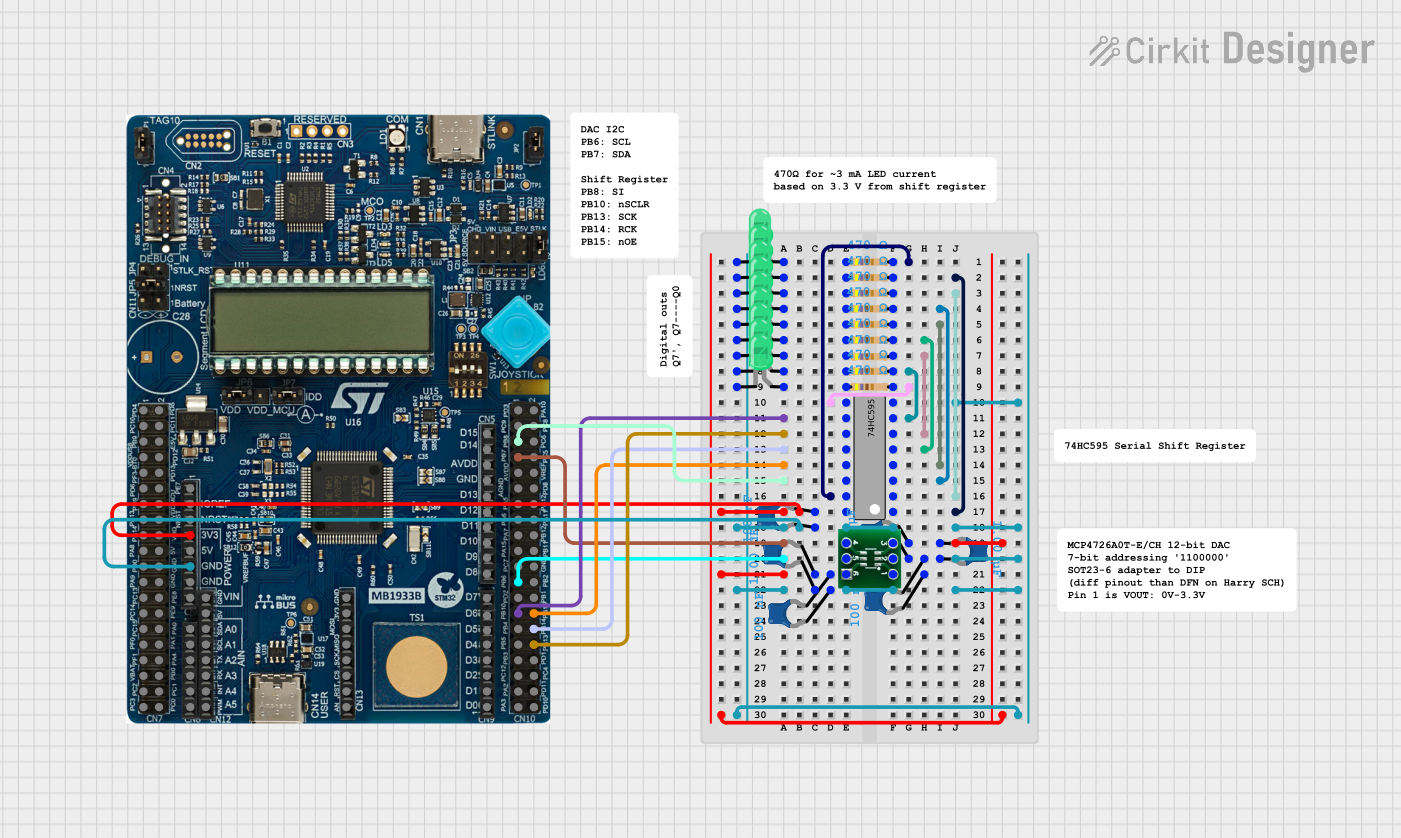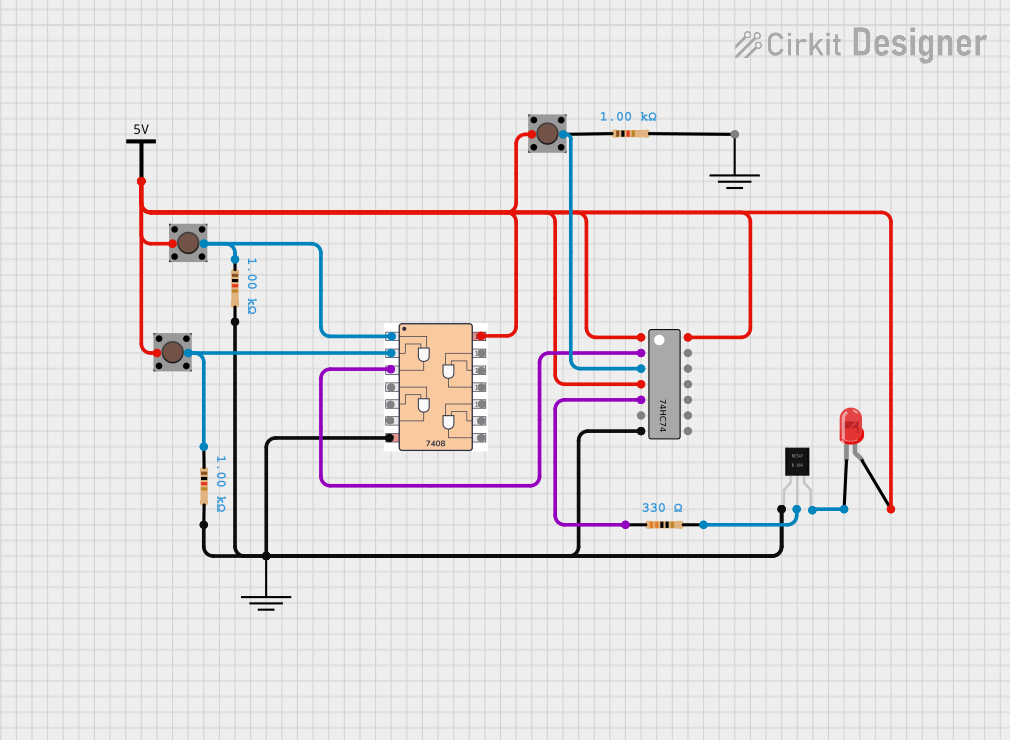
How to Use 74HC27: Examples, Pinouts, and Specs

 Design with 74HC27 in Cirkit Designer
Design with 74HC27 in Cirkit DesignerIntroduction
The 74HC27 is an integrated circuit that contains three independent 3-input NOR gates. It is part of the 74HC family, which is a range of high-speed CMOS logic integrated circuits. NOR gates are fundamental building blocks in digital electronics, and the 74HC27 is commonly used in a variety of applications such as logic function generation, control circuits, and digital systems where multiple inputs need to be combined to produce an inverted output.
Explore Projects Built with 74HC27

 Open Project in Cirkit Designer
Open Project in Cirkit Designer
 Open Project in Cirkit Designer
Open Project in Cirkit Designer
 Open Project in Cirkit Designer
Open Project in Cirkit Designer
 Open Project in Cirkit Designer
Open Project in Cirkit DesignerExplore Projects Built with 74HC27

 Open Project in Cirkit Designer
Open Project in Cirkit Designer
 Open Project in Cirkit Designer
Open Project in Cirkit Designer
 Open Project in Cirkit Designer
Open Project in Cirkit Designer
 Open Project in Cirkit Designer
Open Project in Cirkit DesignerCommon Applications and Use Cases
- Digital logic circuits
- Control systems
- Signal inversion
- Function generators
- Alarm systems
- Combination and permutation circuits
Technical Specifications
Key Technical Details
- Logic Type: NOR Gate
- Number of Gates: 3
- Number of Inputs per Gate: 3
- Supply Voltage (Vcc): 2V to 6V
- High-Level Output Current (IoH): -5.2 mA (max)
- Low-Level Output Current (IoL): 5.2 mA (max)
- Propagation Delay Time: 15 ns (typical at Vcc = 5V)
- Operating Temperature Range: -55°C to +125°C
Pin Configuration and Descriptions
| Pin Number | Description |
|---|---|
| 1 | Input A1 |
| 2 | Input B1 |
| 3 | Input C1 |
| 4 | Output Y1 |
| 5 | Input A2 |
| 6 | Input B2 |
| 7 | Input C2 |
| 8 | Ground (GND) |
| 9 | Output Y2 |
| 10 | Input A3 |
| 11 | Input B3 |
| 12 | Input C3 |
| 13 | Output Y3 |
| 14 | Positive Supply (Vcc) |
Usage Instructions
How to Use the 74HC27 in a Circuit
- Connect the Vcc pin (14) to a positive supply voltage between 2V and 6V.
- Connect the GND pin (8) to the ground of the circuit.
- Apply input signals to the A, B, and C inputs of the NOR gates as required.
- The output Y will be HIGH only if all inputs (A, B, and C) to the corresponding NOR gate are LOW.
Important Considerations and Best Practices
- Ensure that the supply voltage does not exceed the maximum rating of 6V to prevent damage.
- Unused inputs should be tied to Vcc or GND to avoid floating inputs which can lead to unpredictable behavior.
- Decoupling capacitors (typically 0.1 µF) should be placed close to the Vcc pin to filter out noise.
- Avoid loading the output with a current higher than the maximum specified to prevent damage to the device.
Troubleshooting and FAQs
Common Issues
- Outputs not behaving as expected: Ensure that all inputs are properly connected and that there are no floating inputs.
- Device heating up: Check if the supply voltage is within the specified range and that the output current is not exceeding the maximum ratings.
Solutions and Tips for Troubleshooting
- Double-check wiring and connections for any shorts or open circuits.
- Measure the supply voltage to ensure it is within the recommended range.
- Use a multimeter to verify the logic levels at the inputs and outputs.
- Ensure that the output is not being overloaded by connecting too many devices or a device that draws too much current.
FAQs
Q: Can I use the 74HC27 at a supply voltage lower than 2V? A: No, the 74HC27 is designed to operate within a supply voltage range of 2V to 6V.
Q: What happens if I leave an input pin unconnected? A: Unconnected or floating inputs can pick up noise and cause unpredictable behavior. It is best to tie unused inputs to Vcc or GND.
Q: Is the 74HC27 compatible with TTL logic levels? A: Yes, the 74HC27 is TTL compatible when operating at Vcc = 5V.
Q: Can I connect the outputs of two NOR gates together? A: Directly connecting outputs can cause damage when they are at different logic levels. Use a proper logic circuit to combine outputs.
Example Connection with Arduino UNO
// Example code to demonstrate the use of 74HC27 with Arduino UNO
const int inputPinA1 = 2; // Connect to 74HC27 Pin 1
const int inputPinB1 = 3; // Connect to 74HC27 Pin 2
const int inputPinC1 = 4; // Connect to 74HC27 Pin 3
const int outputPinY1 = 5; // Connect to 74HC27 Pin 4
void setup() {
pinMode(inputPinA1, OUTPUT);
pinMode(inputPinB1, OUTPUT);
pinMode(inputPinC1, OUTPUT);
pinMode(outputPinY1, INPUT); // The output from 74HC27 is an input to Arduino
}
void loop() {
// Set all inputs to LOW
digitalWrite(inputPinA1, LOW);
digitalWrite(inputPinB1, LOW);
digitalWrite(inputPinC1, LOW);
// Read the output of the NOR gate
int outputState = digitalRead(outputPinY1);
// Output should be HIGH since all inputs are LOW
if (outputState == HIGH) {
// Do something when the NOR gate output is HIGH
}
// Add a delay for stability
delay(100);
}
Remember to connect the Vcc and GND pins of the 74HC27 to the 5V and GND pins on the Arduino UNO, respectively. The example above demonstrates a simple use case where all inputs are set to LOW, and the output is read by the Arduino. Adjust the input states as needed for your specific application.